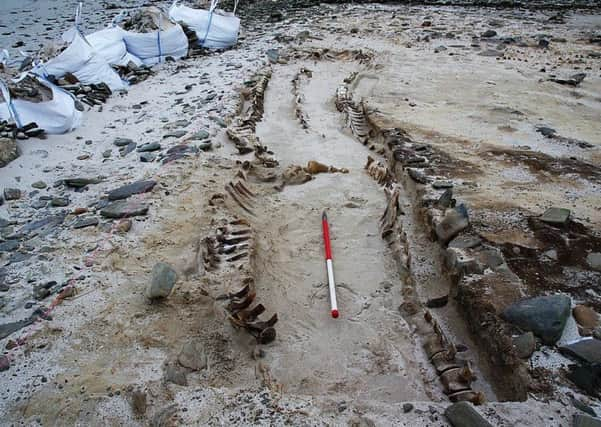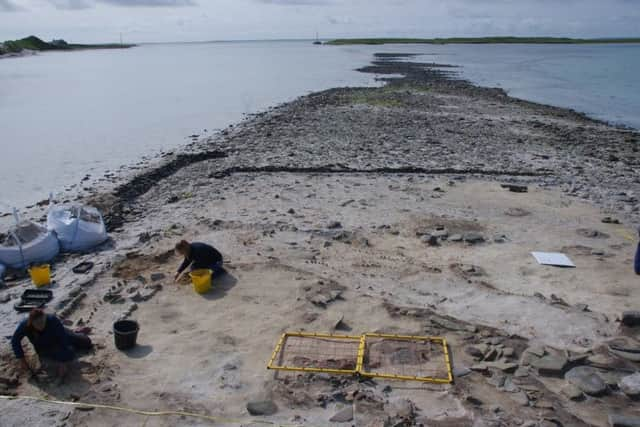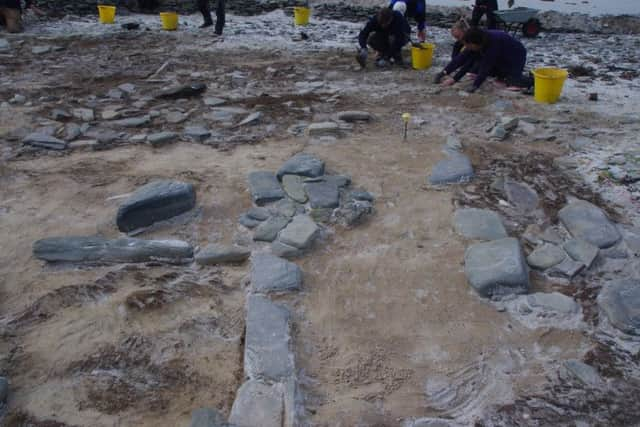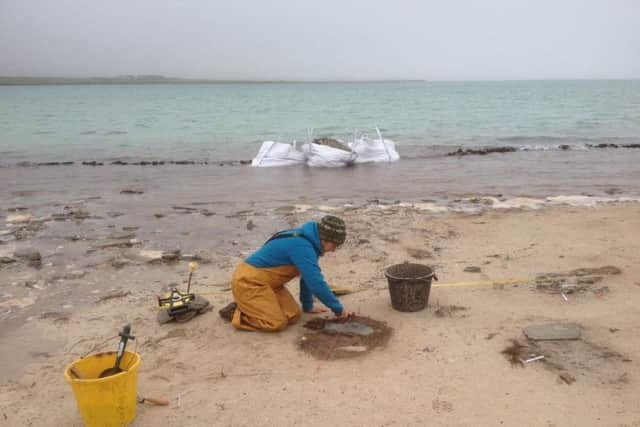Early 19th century whales found at Orkney archaeological dig


Perhaps the most amazing and unexpected discovery has been to find two large cut pits within the trench that contain the skeletons of a minimum number of twelve whales.
Several people have recounted a tradition of whales being ca’d (driven) ashore at Cata Sands.


Advertisement
Hide AdAdvertisement
Hide AdProf Colin Richards, one of the dig’s leaders, said: “We wondered if this tradition could account for the whale remains.
“A very likely explanation was given by local Orcadians who provided us with an account of a 19th century visit to Sanday published in the year 1875.
“In it the author describes the scene where no less than 80 whales were driven ashore on the Sabbath only to be butchered for their blubber.
Blubber was a source of oil used, amongst other things, in lamps.”


Another reference to whales being driven into Cata Sands in the 18th Century also exists. On that occasion there were hundreds driven in. More research will clarify the origin of these skeletons.
Meanwhile, the archaeologists have now concluded that the structural remains are those of an early Neolithic house (c.3400-3100BC) with associated occupation deposits, hearth and stone walls.
Prof Richards said: “The early Neolithic house is both interesting and unusual in having been built on a deep layer of sand, which rests on rounded beach stones.
“At least two construction phases have now been recognised.


Advertisement
Hide AdAdvertisement
Hide Ad“The primary house has a stone set hearth, internal pits and boxes, and remains of the lower courses of a double-faced thick stone outer wall and small dividing stones, which partition the house into different living areas.
“This phase of the structure is comparable with examples of dwellings at Stonehall, Mainland and Knap of Howar, Papa Westray. Although excavations at Pool uncovered some early Neolithic structures in the 1980s, this is the first ‘classic’ early Neolithic house to be discovered in Sanday.”
He added: ““It is also contemporary with a stalled burial cairn situated just along the coast at Tresness, which is also being examined by the team.
Another rectangular setting of stones to the north-west is a second hearth that relates to an extension and reconstruction of the earlier house.


“This is remarkable and only seen at Ha’ Breck on the island of Wyre.
“A range of finds associated with the Neolithic house including some fragments of pottery, Skaill knives, a grinding stone, flint working remains and animal bones have also been unearthed.
“More importantly, preservation is excellent and the floor deposits are a deep red-brown colour and are rich in organic remains.
As the site is located on sand there is also good bone preservation, which is quite rare in other early Neolithic Orcadian settlements.
Advertisement
Hide AdAdvertisement
Hide AdThis high degree of preservation will allow us to obtain a unique level of information regarding daily life within the Early Neolithic house.
However, excavating this site has its challenges, not least that it is in the intertidal zone and is partly underwater twice a day.


The excavation team includes Prof Colin Richards, Prof Jane Downes, Christopher Gee from the University of the Highlands and Islands Archaeology Institute and Dr Vicki Cummings from UClan in addition to participants from the Sanday Archaeology Group, University of Cambridge, and students from UHI and UCLan, but also involves specialists from as far away as the School of Conservation and Restoration of Cultural Heritage, Galicia, Spain.
